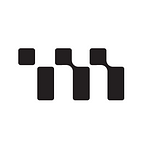Mundane vs. Virtual Identity — What’s the difference?
The year was 1969. A small group of computer scientists, some of the foremost thinkers in the world in their field, sat huddled around a whirring set of screens. What they would go on to achieve would propel the growth of what we know today as the internet, and by in large change the way our societies operate.
Thanks to the advent of the internet, we find ourselves often shifting, sometimes trapped, and constantly living between the world of the real and the world of the online. In terms of identity, this means accepting the fact I exist, not only in the physical mundane world, but also very much in the non-physical, virtual realm of the online.
The digital world has enmeshed so much with our lives that there is no longer a clear definition between it and the physical realm. It is a part of us now, adding another dimension to who we are and what we will become. Nowhere is this clearer than in the case of identity.
We are no longer only our physical identities but a scattered assortment of information living both in the online and offline worlds which, when combined, paint the most complete picture of who we are. The challenge comes in keeping these scattered elements of our identity together and secure.
Mundane identity
Mundane identity proves our existence in the offline world. It includes your social security card, driver’s license, birth certificate, and all the physical reminders of who we are and how the world should place us. The pieces of a mundane identity are controlled through central authorities who act as regulators of our information.
Virtual identity
Virtual identity is the manifestation of one’s self in the realm of e-commerce, email, and social networking to take some of the most common examples. It is our intangible, scattered presence in a growing sphere of connectedness.
A virtual presence means that part of who we are lives in the form of digitalized information. So, while we are free to exist in a vast jungle of interconnected possibilities, these pieces of digitalized information, anything from usernames, to passwords, to profiles, are often out of our control, existing independent of one another on platforms all over the online space. This brings with it tremendous opportunities, but also significant risk.
So where does this leave us and why does it matter?
The problem is that our identity remains a separated mix of online and offline information, owned not by the individual, but by varying central authorities. It’s vulnerable to attack such as degradation, manipulation, and thievery.
The challenge in solving this problem is that there have historically been no effective applications to handle A) the unification of the scattered pieces of identity and B) the handing over of control from central authorities to those whom the identities belong — the individual.
Enter Metadium
If we are to not only survive but thrive in the coming ages, we must merge our mundane selves with our virtual selves, creating a more complete and wholesome digital self. This redefinition of identity addresses both challenge A) unifying the scattered elements under one self-sovereign, geo-politically unbound, entity and B) reallocating control of identities back to the individuals through the decentralization afforded by blockchain.
Metadium has taken this challenge head on, creating an ID system where all pieces of an individual’s identity are integrated into one Meta ID which is controlled by the user and not a central authority, and secured with its decentralized public key infrastructure.
It’s a new way to approach identity which allows us to keep advancing as a society while maintaining the right and security that we as individuals deserve.
— Jake Hostetler from the Metadium team
